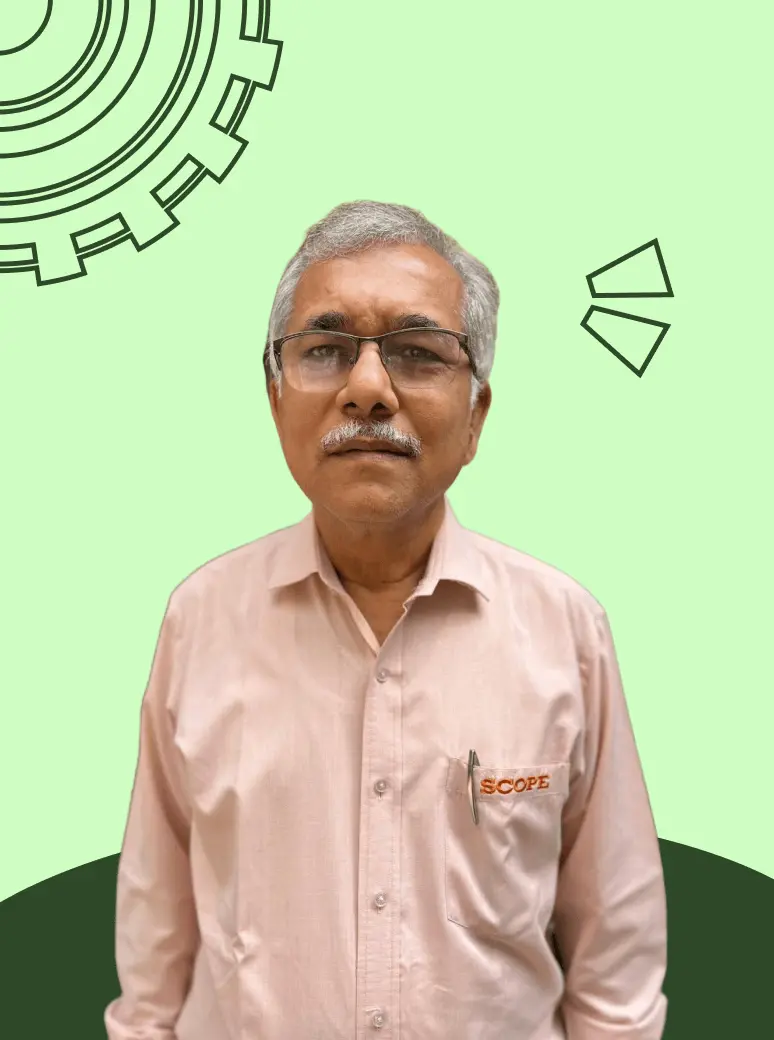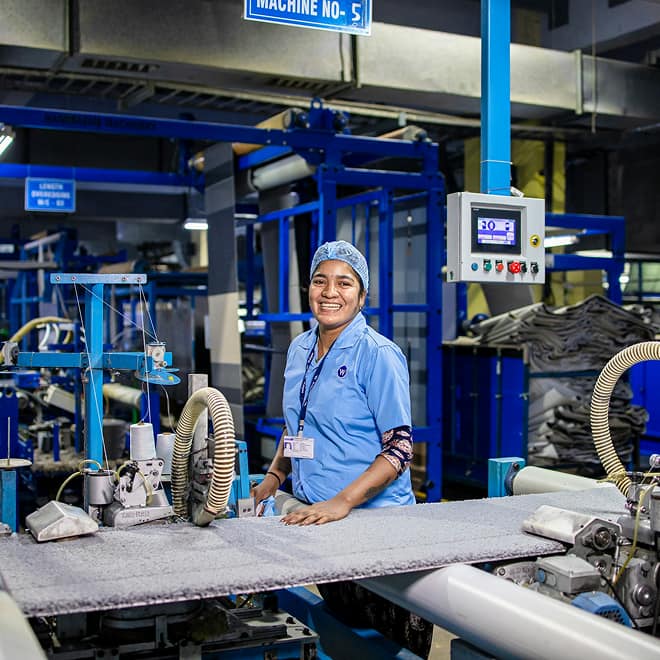Building India’s Power Backbone — Vivekanand Sindkar’s 35-Year Journey at SCOPE T&M

Building India’s Power Backbone: The 35-Year Journey of Vivekanand Sindkar at SCOPE T&M
In 1989, a young engineer named Vivekanand Sindkar began his career with a single passion: research and development. He dreamed of being at the cutting edge of innovation, designing and experimenting in labs. But in India at the time, opportunities in pure research were scarce. Instead, he rolled up his sleeves and immersed himself in the practical world — first in R&D, then in sales, marketing, operations, and eventually every other vertical that a company could throw at him.
Three and a half decades later, Vivekanand is the CEO of SCOPE T&M Pvt. Ltd., a 700+ employee company serving clients in 46 countries. Under his leadership, SCOPE T&M has grown from modest beginnings into one of India’s most respected manufacturers of electronic measuring products for the power sector. Long before “Make in India” became a slogan, SCOPE was already doing it - building indigenous solutions that replaced expensive imports, conserving foreign exchange, and strengthening India’s technological backbone.
His journey is a lesson in patience, adaptability, and the power of vision to transform a company — and a country’s industrial trajectory.
From Dreaming of Research to Building a Career in Practice
When Vivekanand started his career in the late 1980s, India’s technology ecosystem was still developing. Microprocessors and microcontrollers — the building blocks of modern electronics — had to be imported from Europe. For a young engineer passionate about R&D, the limited exposure was frustrating.
But rather than give up, Vivekanand adapted. He realized that to make an impact, he had to understand not just research, but also how businesses operate, how products are marketed, how services are delivered, and how teams are managed.
This shift from pure research to practical experience became the foundation of his leadership. By the time he rose to CEO, he had firsthand knowledge of every major function in a company. That broad perspective made him a rare kind of leader — one who could balance vision with execution, innovation with operations.
Building SCOPE T&M: From Importer to Innovator
When SCOPE T&M began, India was heavily dependent on imported technology in the power sector. Products like microprocessors and microcontrollers were sourced from Europe at significant cost. Vivekanand and his team saw both a challenge and an opportunity: if India could design and manufacture its own electronic measuring products, it could save valuable foreign exchange and strengthen domestic capability.
Over the years, SCOPE T&M built exactly that. They developed indigenous solutions for the power sector, replacing imports with homegrown technology. In the process, they didn’t just save money — they built confidence.
The company grew steadily, creating specialized divisions to expand its offerings:
- 2004: Service Division launched, ensuring customers got not just products but long-term support.
- 2009: Protection Division added, widening the company’s role in power infrastructure.
Today, SCOPE T&M is a multi-division organization with a portfolio that rivals global players, yet built on an Indian foundation.
Scale and Global Impact
From its modest beginnings, SCOPE T&M now employs over 700 people and serves clients across 46 countries. What started as a small team determined to innovate despite constraints has become a global presence.
The company’s story is one of consistency and resilience. Over the past 35 years, there were periods of stagnation and market downturns, but each time, Vivekanand and his team responded with innovation. Instead of waiting for the market to change, they created new solutions, opened new divisions, and built new competencies.
In doing so, they proved that Indian companies could compete not just domestically, but internationally — on quality, reliability, and innovation.
A Leadership Philosophy Grounded in People
For Vivekanand, leadership has never been about titles or authority. His philosophy is simple: stay connected with employees at every level.
In a 700+ employee organization, it would be easy for a CEO to become distant. But Vivekanand believes morale and trust come from visibility and connection. He makes it a priority to engage with people across the hierarchy, ensuring that communication doesn’t just flow top-down, but also bottom-up.
He also focuses on building leaders rather than just managing teams. His goal isn’t to create followers, but to empower the next generation of decision-makers within the company. It’s a long-term approach that ensures continuity, resilience, and sustained innovation.
Trust, he believes, isn’t just for employees. It’s the foundation of client and partner relationships too. In industries like power and infrastructure — where contracts are large and timelines long — trust is the currency that sustains growth.
Looking Ahead: AI and the Future of Manufacturing
As someone who has seen Indian manufacturing evolve from dependency to self-reliance, Vivekanand is realistic about the future. AI, he believes, will contribute around 5–10% automation in manufacturing, especially in data analysis and decision-making.
But unlike many who see AI as a sweeping disruptor, he insists the core of operations and R&D will remain human-led. Algorithms can process data, but innovation — the spark that drives real breakthroughs — still comes from human curiosity and creativity.
For SCOPE T&M, AI will be a tool, not a replacement. It will augment decision-making, improve efficiency, and help scale globally — but the heart of the company will always beat with human ingenuity.
Lessons for Young Professionals
With decades of experience behind him, Vivekanand has clear advice for those just starting out:
- Spend 4–5 years in R&D. Early exposure to deep technical work builds the foundation for long-term growth. Even if you later move into sales or leadership, a strong R&D background gives you credibility and depth.
- Be patient. Careers in manufacturing are marathons, not sprints. Results often take years to materialize, and resilience during slow phases is key.
- Think out of the box. During stagnant phases, the ability to look at problems differently often sparks the breakthroughs that change trajectories.
- Adapt constantly. The market, technology, and customer expectations will keep evolving. Stagnation is inevitable — survival depends on adaptability.
Why His Journey Matters
In an era where many young professionals dream of instant success through startups or flashy tech jobs, Vivekanand Sindkar’s story is a reminder of the power of long-term dedication.
He didn’t build a unicorn overnight. He built a company over 35 years — patiently, steadily, and with a relentless focus on innovation. In doing so, he helped India conserve foreign exchange, strengthened domestic manufacturing, and created jobs for hundreds.
His story is not about glamour but about grit — the kind of grit that quietly builds nations.
Closing Thought
From dreaming of research in the late 1980s to leading a multinational manufacturer in 2025, Vivekanand Sindkar’s journey reflects the heart of Indian manufacturing: resilient, innovative, and people-first.
As SCOPE T&M looks ahead to expanding its global presence, one thing remains constant: its belief in indigenous innovation and human-led growth. For the next generation of engineers and leaders, Vivekanand’s story is both a guide and an inspiration.
Because in the end, the true measure of leadership isn’t how fast you rise, but how many people and industries rise with you.
Recent Stories

At the Intersection of Engineering, Manufacturing, and India's growing HVAC/Built Environment sector: Nisha Anil Nair

Made in India, for the World: Pritesh Shah's Journey of Innovation, Resilience, and Purpose
